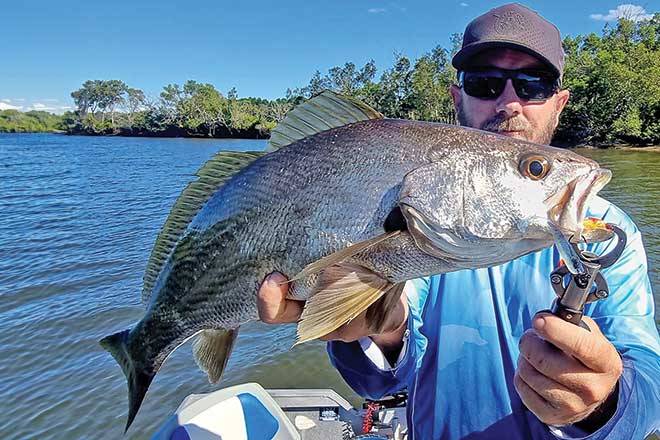One of my favourite types of fishing is shallow water finesse plastics fishing, targeting species such as bream, flathead, grunter, trevally and tailor.
Throughout the colder months, I find there is an influx of bait in the river and estuary systems, along with cooler water temperatures, which encourages fish to get up into the shallows to feed.
In the shallows, predators have the advantage because the bait has nowhere to run, trapped within a thinner column of water where it can be herded and picked off easily.
Once hooked, fish are forced to run sideways through the shallows, creating some line- burning runs and epic battles.
Let’s get into some shallow water and get hooked up!
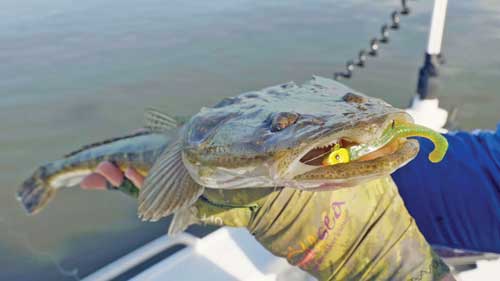
What are the shallows?
I would describe the shallows as water that is less than 1.5m deep.
However, I’ll frequently fish in water from about 0.8-1.2m deep and this seems to be the magic depth for holding bait and having enough water to attract fish of all sizes.
These areas usually consist of large expanses of sand and mud flats that drain at low tide, along with the shallows that remain on the lower stages of the tide, such as channel edges, drains and river channels.
A lot of these spots are often barren so, like a desert, we are looking for the oasis, which comes in the form of structure.
Structure attracts bait, which is generally the key to finding predatory species when fishing the shallows.
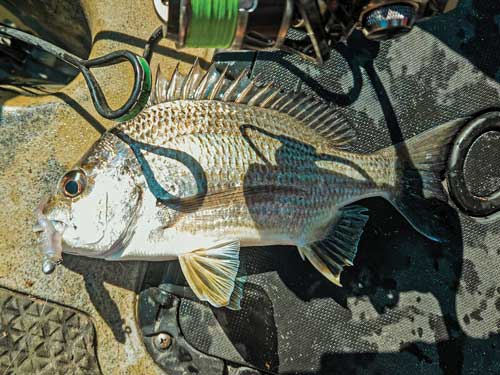
Higher tide tactics
On the higher stages of the tide, the water will cover many places that are dry on the lower stages of the tide, and these are my favourite areas to fish.
Fish will move into these locations primarily to feed, encouraging a more aggressive feeding response.
It’s also an opportunity to explore those flats, creeks and drains that are too shallow to fish on the lower stages of the tide.
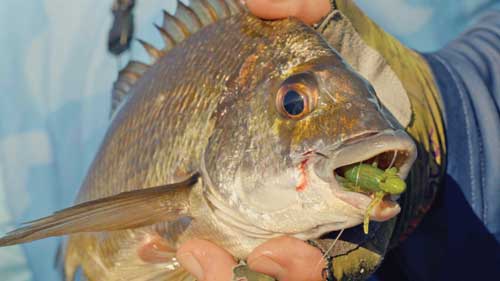
Key structure on the higher stages of the tide – including man-made pontoons, rock walls, jetties, boat ramps and bridges – may not be accessible or able to be fished effectively on the lower stage of the tide.
A lot of the high-tide structure that I fish consists of natural areas, such as mangrove edges, weed and mud flats, and rubble.
There are two tactics I use on this stage of the tide – the last of the run-in and the first of the run-out.
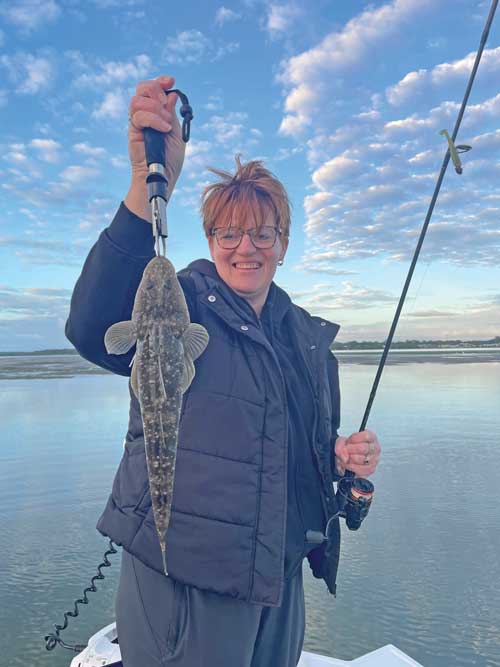
First, if there are wide expanses of flats with weed and rubble spread over the area or extensive mangrove lines, I will drift the area to cover water and run and gun (or fish quite quickly), targeting actively feeding fish.
For this style of fishing, I will generally use paddle tail soft plastics that can be slow rolled, hopped and shaken mid-water to mimic the bait found in the area, also known as matching the hatch.
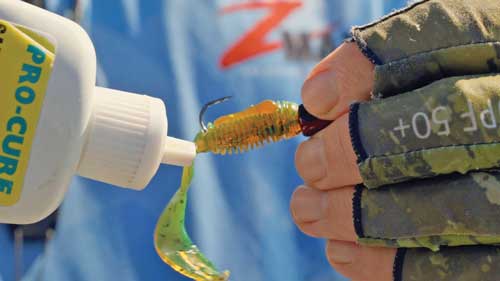
If the available structure is smaller or more isolated, I will switch to a more focused approach whereby I target specific areas that should hold fish.
Key things to look for again include bait, water movement and eddies, deeper sections in the shallows and areas that the fish should use as roadways to travel between different sections of the waterway.
For this more focussed and often slower style of fishing, I will commonly switch to a prawn imitation or curl tail plastic, but more on that later.
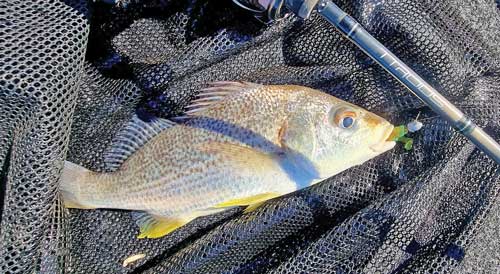
Mid-tide tactics
The middle stage of the run-in or run-out tide is often the period when fish are transitioning between high and low tide holding areas and so it makes sense that this is also when anglers struggle the most.
During this period, I will follow the bait as it moves away from high tide structure and onto the flats, towards deeper water.
The height of the tide will often dictate how quickly the bait and fish move off the flat, with some species moving off quicker than others.
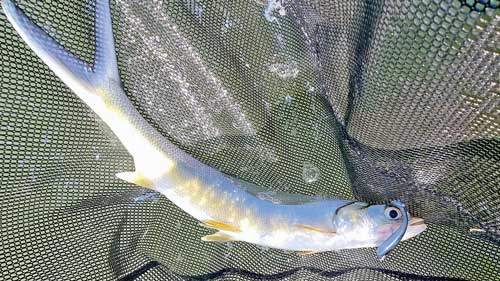
I have found that grunter and pelagic species will often be the first to leave, followed by bream and, if you want to hunt primarily flathead, then you can hang in there a bit longer until the water gets down to about 0.5m.
It’s worth noting that fish will generally push onto the flat earlier in the tide on a rising tide and drop off a flat faster on a falling tide, so a similar depth of water may hold more fish on the run-in tide.
This stage of the tide is also where I look for any drains that are coming off the shallow flats and I position myself in these areas waiting for the fish to begin moving to deeper water.
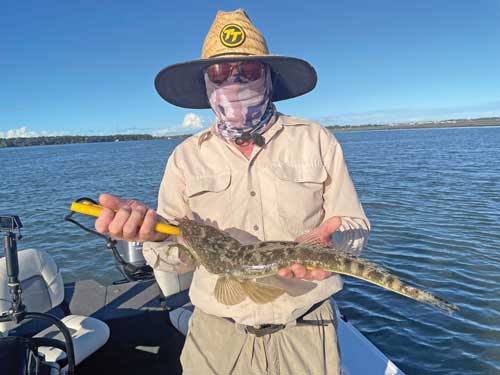
Drains will funnel the water and bait from the shallows and fish will use these deeper areas of flow to exit the flat, while also potentially holding in these areas to let the bait come to them.
Again, I will be fishing faster and covering water up in the shallows or slowing things down a bit if I’m focusing on working a drain.
If you arrive in an area at this stage of the tide and are unsure where to start fishing, focus on key structure, that magic water depth of 0.8-1.2m of water and keep an eye out for areas where the water is draining from the shallows into deeper water.
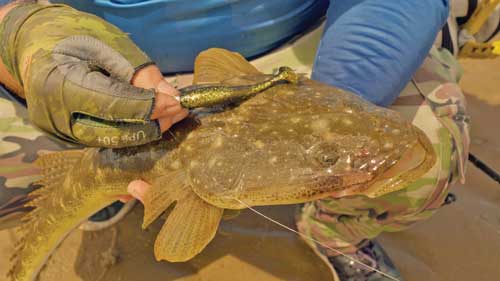
Lower tide tactics
The last couple of hours of run-out and the first hour of run-in are the most productive periods of the tide and a favourite for many anglers.
Fish are concentrated on the channel edges, in the drains and creek channels, there is less water between the fish and the bait has been forced into the mix.
This is prime flathead fishing time.
However, it will also produce a mixed bag of species that feed on the edges, where the bait is waiting for its opportunity to escape back into the shallows.
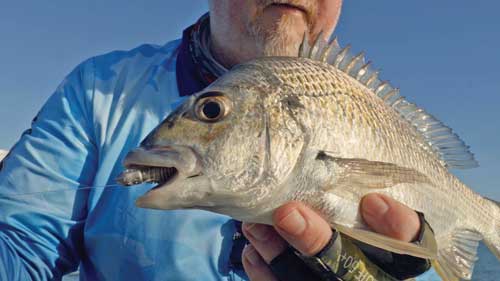
When fishing the lower stages of the tide, I will simply work along the edges.
If the bank drops away quickly into deeper water, I will cast parallel along the edges, making a cast into the shallow water, one a little deeper and then one along the deeper edge of the drop-off.
Fanning casts like this will produce a variety of species and help you to crack a pattern if the fish are holding in a particular depth.
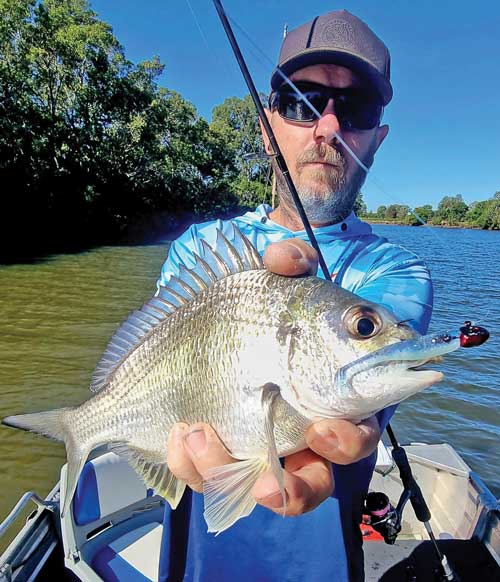
If the bank tapers more slowly, I will often sit a cast distance from the bank and cast slightly up current or ahead of the drift and work the plastic back out from the bank to where I am positioned.
The aim is again to cover a variety of depths and structure to crack a pattern and work out where the fish are holding, along with the presentation and retrieve that they are responding to.
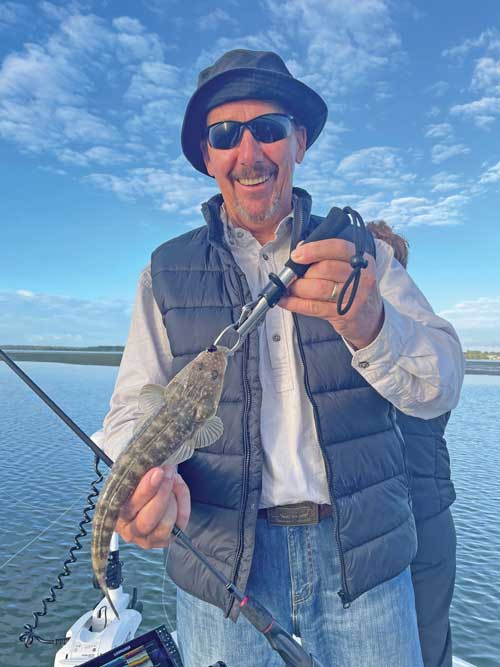
This stage of the tide also brings everything back into the creek channels and is an opportunity to drift or use the electric motor to explore these areas.
When fishing a smaller creek, you may be able to position yourself in the centre of it as you drift or electric and fan your casts to cover each side of the creek and its channel.
If the creek is large, you may have to focus on one side, so maybe spend a short period on each side and then select the one that has better structure, varied depth, more bait or more fish activity.
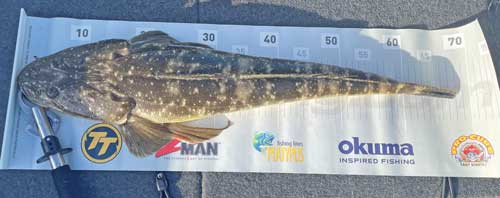
Go-to combo
If I plan to mix up the fishing and fish throughout the tide cycle, I will generally have a minimum of three combos with me in the kayak or boat.
These will be a light, medium light and medium combo – to cover light finesse presentations through to heavier presentations for fishing deep edges.
With up to 10 combos rigged and ready to go in the boat at one time, I have built my kit around bang-for-buck and find the TT Black Mamba or Red Belly rods offer excellent quality and performance, paired with the value of the feature-packed Okuma Ceymar HD spin reels.
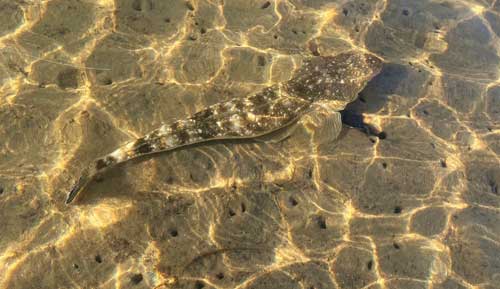
Let’s look at the three combos and why each is included in the kit.
Light combo
This combo consists of a 7’0” 1-3kg spin rod and 1000 size reel, loaded with 6lb braid.
When it comes to fishing light soft plastic presentations, this is the go and is perfect for casting 1/28oz to 1/4oz jig heads.
I have it commonly rigged with a 1/8oz jig head for targeting structure, sandy pockets among the weed and super shallow drains that are still holding fish.
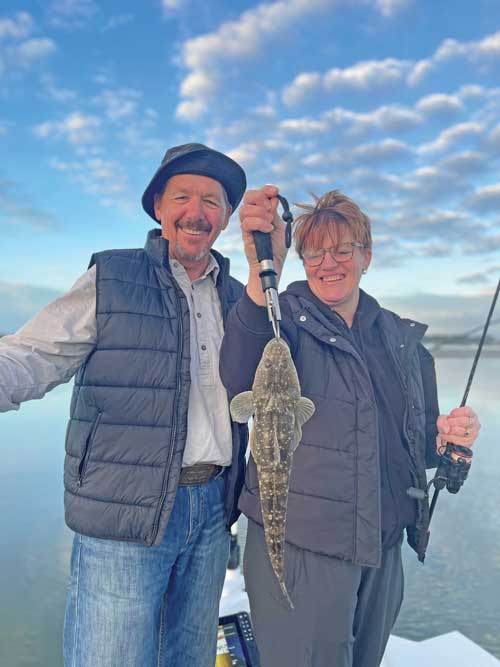
Medium light combo
Stepping up to a great allrounder and the best place to start if you are getting into shallow plastics, a 7’ 2-4kg rod and 2500 size reel, spooled with 8lb braid.
This is my go-to combo, and it will be rigged with a 1/4oz jig head for making long casts, covering water and picking apart structure, as well as working slow tapering edges on the lower stages of the tide.
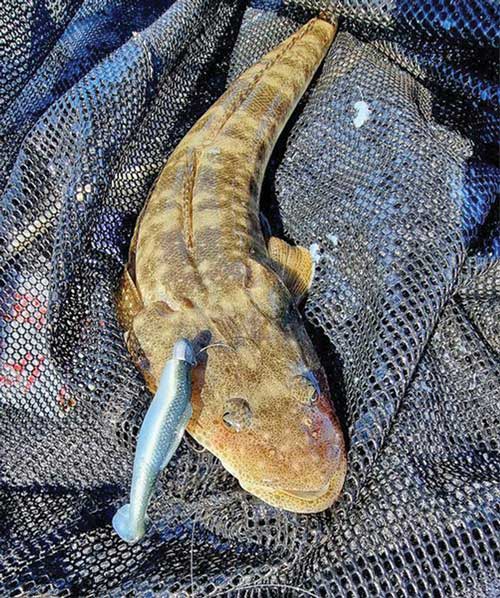
Medium combo
Depending on the fishing you’re doing, you may not need this one in your kit, doubling up on one of the other combos.
I primarily use this 7’ 3-6kg rod and 2500 size reel, spooled with 10lb braid, for fishing the deeper edges, especially if the current is flowing harder, and it is ideal for working larger 3-4” soft plastics on 3/8oz jig heads.
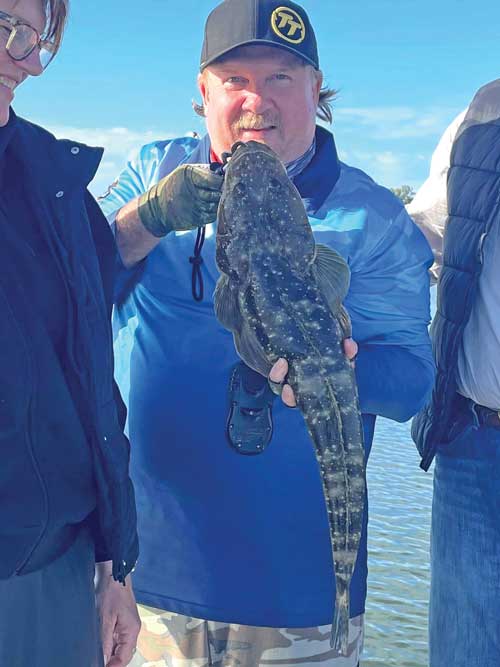
Leader will be based around target species, environment and conditions, with lighter leader often required in clear water and when fish are finicky, such as 6lb and 8lb.
When fishing heavy structure and leader-destroying species, you may be stepping to 15 or 20lb, and even 40 or 60lb up north in barramundi country.
For me, based around the rivers and estuaries of southeast Queensland, a 10lb leader is my go-to for targeting bread-and-butter species.
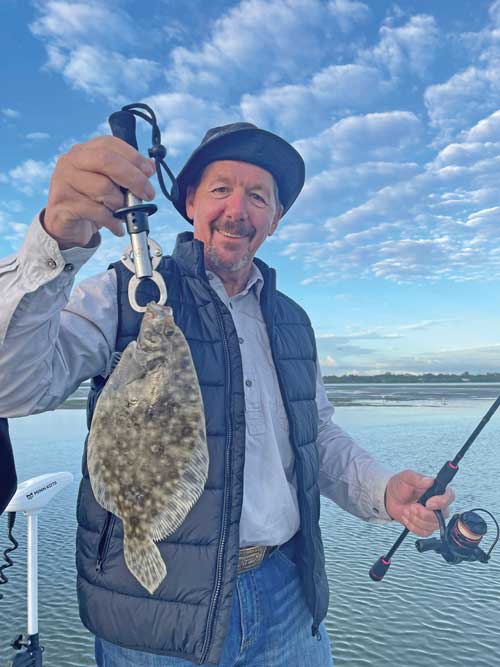
Go-to gear
As mentioned previously, I will run a paddle tail plastic when fishing faster and covering water, with my go-to presentations being a Z-Man 2.5” Slim SwimZ on a 1/0 TT HeadlockZ Finesse jig head.
This is ideal when I’m hedging my bets between bream, grunter, flathead and a mixed bag of other species.
If the focus is flathead and larger estuary species, then it’s a Z-Man 3” MinnowZ on a 1/4oz or 3/8oz TT HeadlockZ HD jig head.
When I’m slowing things down and picking apart structure, I will tie on a Z-Man 2.5” PrawnZ or ST GrubZ, rigged on a 1/8-1/4oz 1/0 TT HeadlockZ Finesse jig head.
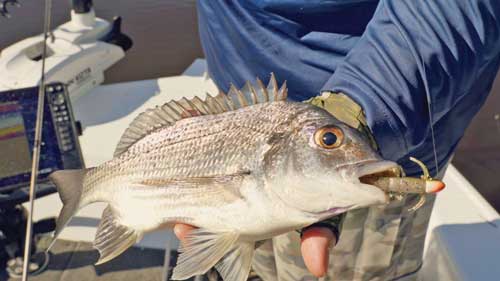
These are both proven plastics that respond well to a few hops and a pause, or a shake and wind, followed by a pause.
If you’re not getting bites around the structure, try slowing things down and giving the fish a chance to eat the soft plastic.
Fishing the shallows throughout winter can be both productive and fun, especially when fishing light gear and finesse soft plastics.
Remember to keep in mind the water depth, available structure, where the water is flowing throughout the tide cycle and in turn, where fish may be holding or moving during the various stages of the tide.
See you on the water…
 Bush ‘n Beach Fishing Magazine Location reports & tips for fishing, boating, camping, kayaking, 4WDing in Queensland and Northern NSW
Bush ‘n Beach Fishing Magazine Location reports & tips for fishing, boating, camping, kayaking, 4WDing in Queensland and Northern NSW

